The Best Trickle Chargers for a Healthy Car Battery

If you’re going to be storing a car for a long time, going on a long holiday, or don’t drive your car in the winter (or summer), then using one of the best trickle chargers to maintain your battery is vital. Without a car battery charger, you’re likely to come back to a dead battery when it’s time to put your ride back on the road.
Car battery chargers are also especially useful if you have an older car, a weaker or older battery that needs to be replaced, or batteries that aren’t in a vehicle at all. Trickle chargers work by releasing a small amount of current to match a battery’s natural self-discharge rate to keep it topped up at its fully charged level. They’re great for anything with a battery that doesn’t get used at least weekly, like ATVs, boats, generators, snowmobiles, motorcycles, lawn tractors, and more.
All of these are more or less the same thing, and can come in many sizes, with many features, from very affordable basic car battery chargers, to fully automatic battery maintainers designed for long-term use. Some can charge at high rates, some have more safety features, and others will let you know when your battery is fully charged, or damaged. Fortunately, you can find battery chargers for your car from basic affordable models, to professional shop units, so there’s one for your budget and needs. If you also have recreational or lawn and garden equipment, make sure it’s capable of charging and maintaining both 6- and 12-volt batteries. Heavy equipment uses 24-volt batteries, and cars may even go to 48-volt electrical systems, so if you have a more serious home shop, it might be worth it to future-proof your purchase.
The best car battery chargers can not only keep your battery charged and maintain it in good condition, but have repair cycles that can help to bring back a dead battery and extend the life of an older car battery. You can even use them as jump starters, which is ideal if you have many kinds of battery-started vehicles and equipment.
For more information on the best trickle chargers for your car’s battery, refer to our Table of Contents.
Why You Should Trust AutoGuide's Product Reviews
We drive the latest new cars, trucks, and SUVs, but did you also know the team at AutoGuide.com tests tires, waxes, wiper blades, and pressure washers? Before we recommend a product as a top pick in one of our popular product lists, our editors put it to the test. We run through all its features, test the claims that the brand makes about each product, and then give an honest opinion on what we like and don’t like from our personal experience. As experts in all-things automotive, from minivans to sports cars, and from portable jump starters to ceramic coating, we want to make sure you buy the product that’s right for you.
Table of contents
- 1. Editor's Pick: Battery Tender Plus 12 V, 1.25 Amp Battery Charger
- Promoted Product: NOCO GENIUS1
- 2. Budget Pick: BLACK+DECKER BM3B Fully Automatic 6V/12V Battery Charger/Maintainer
- 3. Most Versatile: Schumacher SC1304 Fully Automatic Battery Charger Maintainer
- 4. SOLPERK 50W/12V Solar Battery Trickle Charger Maintainer
- 5. Clore CHARGE IT! 4506 6/12V (6/2) Amp Smart Charger
- 6. NOCO genius5, 5-Amp Fully-Automatic Smart Charger
- 7. Shop worthy: Forney 52755 Battery Charger, 6V 2A/10A, 12V 2A/10A/40A/200A Engine Starter
- What are Car Battery Chargers, Trickle Chargers, and Battery Maintainers?
- Can a Trickle Charger Revive a Dead Battery?
- Can a trickle charger ruin a battery?
- How to Use a Trickle Charger for Your Car's Battery
- When Should You Use a Trickle Charger?
- Step 1: Locate your battery terminal and ground location
- Step 2: Disconnect Battery
- Step 3: Attach the Trickle Charger
- Step 4: Turn on the Trickle Charger
- Step 5: Finish Charging
- Step 6: Remove the Charger
- Conclusion
- Recent Updates:
1. Editor's Pick: Battery Tender Plus 12 V, 1.25 Amp Battery Charger
Our top pick balances performance and price and is ideal for most car owners. The Battery Tender Plus is both a trickle charger and a maintainer, and is equipped with a temperature compensation feature that allows it to maximize charge voltage based on ambient temperature. The Plus will fully charge your car's battery before automatically switching to float charging to maintain its charge. That means it won't overcharge and keep your batteries safe, no matter how long your vehicle is sitting unused. Manufacturer Deltran says this can extend an unused battery's life by up to 50%. The whole package is only 4.87 x 3.25 x 2.93 inches, and it weighs 1.45 pounds.
Reverse polarity detection will alert you if you have the connection setup incorrectly by flashing the lights on the front of the charger. Those lights will also indicate the various stages of charging. The Battery Tender Plus car battery charger is compatible with all 12V lead-acid, flooded, AGM, and gel cell batteries. It comes with both ring terminals and alligator clips, and Deltran offers a 10-year warranty, plus lifetime technical support.
Pros | 10-year warranty, charger and maintainer, compact and lightweight |
Cons | Short cables, Wi-Fi interference, only 12V battery charging |
Promoted Product: NOCO GENIUS1
The NOCO GENIUS1 is a high-performance, fully automatic battery charger designed to charge and maintain a wide variety of battery types, including lead-acid and lithium-ion batteries.
One of the standout features of the GENIUS1 is its ability to automatically switch between charging modes, depending on the condition of the battery. For example, it can charge a severely depleted battery using its "Recovery" mode and then switch to a "Maintenance" mode to keep the battery at its optimal charge level. This makes it a versatile option for automotive, marine and powersport applications. Another advantage of the GENIUS1 is its safety features. It is designed to protect against overcharging, short-circuiting, and reverse polarity, and spark-proof technology. Additionally, it has built-in smarts to be to detect a bad or damaged battery.
On top of that, the GENIUS1 is versatile. It’s capable of charging and maintaining a wide range of battery chemistries, including AGM, Gel, SLA, VLRA and LiFePO4 batteries. This means that it can be used for a variety of applications, such as charging car, truck and motorcycle batteries, marine batteries, and even golf cart batteries, without needing to purchase additional chargers.
Overall, the NOCO GENIUS1 ability to automatically switch between charging modes and its safety features make it a safe and convenient option for anyone who needs to charge and maintain batteries year-round.
2. Budget Pick: BLACK+DECKER BM3B Fully Automatic 6V/12V Battery Charger/Maintainer
If affordability is your first priority, BLACK+DECKER's car battery charger will satisfy your budget. It's really light on the wallet, and at 5 x 3 x 8.9 inches and one pound, it's literally light, as well.
Fortunately, it comes with a few unique features and safety nets. It's got one-touch automatic charging and both O-ring post and alligator clamp terminals for both battery post styles. It works on all 6- and 12-volt AGM, gel, and wet batteries, so it's great for all kinds of other machines that have smaller batteries. It does only charge at a rate of 1.5 amps, but it has a reverse polarity check to make sure you don't damage your battery in any way.
Buyers note that the device is reliable, but with its limited charge rate, it's not going to do anything very quickly. It's a great trickle charger for occasional use, but we'd upgrade if we were counting on it to maintain an expensive battery.
Pros | Affordable, 6 and 12 volt, reliable, compact size |
Cons | Limited charge rate, not a good choice for a maintainer |
3. Most Versatile: Schumacher SC1304 Fully Automatic Battery Charger Maintainer
Replacing the popular Schumacher SpeedCharge SSC-1000A, the new SC1304 Fully Automatic Battery Charger Maintainer keeps everything that made the old model great, and adds additional capacity and features at a comparable price. Peak charging is up to 15 amps, which is more than enough for any automotive battery; and it's capable of charging 6 and 12 volt standard, AGM, and deep-cycle batteries.
It does lose the low-amperage two watt charging of the SSC-1000A, but has a three amp maintaining cycle that is suitable for most modern batteries. It's still a compact battery charger, measuring 10.3 x 8 x 3.7 inches, and weighing three pounds. Its best feature is automatic, walk-away charging for both 6 and 12 volt batteries, which it detects and charges appropriately. Then, when the battery is fully charged, it switches to maintenance mode to keep them topped off and healthy for months.
You do need to know and select the battery type; and there's a button for powersport or automotive/marine batteries. Cables store onboard behind the retractable carry handle. It only comes with alligator clamps and not ring type; and it doesn't work as a jump starter, which other models in this price range can, although they may not have the same extensive feature set. A two-year warranty is shorter then we like for a car battery charger in this price range.
Pros | 15 amp charging, 3 amp maintaining, 6 and 12 volt compatibility |
Cons | Short two year warranty |
4. SOLPERK 50W/12V Solar Battery Trickle Charger Maintainer
If you've got sun and a battery, you don't need to charge in a hurry then you can keep it ready to go with SOLPERK's low-power, maintenance-free solar battery charger. With an output of 50 watts and 2.78 amps at 12 volts, it's going to struggle with a fully depleted battery—it's best suited for one that's at 50% or more, like in a car you park for part of the year. The big advantage is you only pay for it once, and you don't have to worry about extension cords.
The SOLPERK comes with a waterproof controller capable of bulk, boost, and maintenance float charging, so you can install the whole thing on a post or the side of a building. Overload, voltage protection, short circuit, and back current circuits are built in. The controller supports all 12V battery types, including wet, gel, MF, EFB, and AGM,
The frame is anodized aluminum, and the monocrystalline solar cells are protected with a waterproof membrane and tempered glass panel. Solar battery chargers like these are also very popular for RVs and offroading. It's also perfect for things like an automatic gate controller, fence charger, or anything else that needs to sit out in the weather and get charged.
A solar battery charger is much larger than a plug-in one, measuring 21.3 x 21.3 x 4.45 inches, not counting the controller, and it weighs 9.4 pounds. It does cost as much as a professional charger/maintainer/jump starter and only has a 12-month warranty. SOLPERK's free 24/7 technical support is rated as excellent.
Pros | Perfect if you have sun and no power outlet, weatherproof, includes mounting bracket |
Cons | Expensive, short 1 year warranty, only works with 12V batteries, under 3 amps |
5. Clore CHARGE IT! 4506 6/12V (6/2) Amp Smart Charger
Clore Automotive is a well-known name in battery technology and makes the jump packs you'll find in most tow trucks. So we expect a high level of quality and features from their car battery charger, even in an entry-level home device like this. Clore has done well delivering in both, in the little triangular CHARGE IT! 4506. It charges and maintains all types of 6- and 12-volt batteries, including AGM, deep cycle, gel-cell, and maintenance-free. There is a low 6 amp charge cycle, which means it will not be fast. A 2 amp maintenance mode must be selected manually, as well as the battery type. It will shut off when your battery is fully charged, so we're not sure how well the maintenance function will work.
The lowest-price model in the line doesn't offer the digital display or higher 12 and 20-amp capacity of the other CHARGE IT! chargers, but it's the only one that also works with the 6-volt batteries in ATVs and lawn tractors. It does have the same Smart Clamp technology to prevent short circuits, as well as an automatic soft-start to charge severely depleted batteries. Users do report it will not charge a completely dead battery, though.
The Clore is only 1.1 pounds and has short cords that wrap around little legs on the underside. It's 8 x 7 x 4.5 inches and is designed to sit under the hood close to the battery when in use.
Pros | Compact, versatile, and user-friendly |
Cons | Short 1 year warranty, short cord, won't charge completely dead batteries |
6. NOCO genius5, 5-Amp Fully-Automatic Smart Charger
Cleveland-based NOCO* has come to dominate the jump starter market, even being sold as a factory option in some new cars, and is known as an industry leader. The genius5 is no exception, combining battery charger, maintainer, trickle charger, and desulfator functions in one very small unit.
Replacing the G3500, the genius5 is 35% smaller than the old model while providing 60% more charging power. It operates at 6 and 12 volts, with 5-amp, 75-watt charging for lead-acid automotive, marine, and deep-cycle batteries, including flooded, gel, AGM, and maintenance-free, plus lithium-ion batteries. Unlike many car chargers, its automatic function works with as little as 1 volt remaining, or you can manually override and attempt to charge a fully dead battery. NOCO also claims it will detect the performance loss from a damaged battery and enter a repair cycle. It also has a thermal sensor to account for external temperatures, so you can use it from -4°F/-20°C to 104°F/40°C. Once a battery is fully charged, the genius5 automatically switches into maintenance mode for as long as you leave it connected.
The trickle charger is 4.61 x 3.43 x 7.95 inches and weighs 1.59 pounds. A mounting strap and screws are included if you want to tuck it away permanently under a hood or strap it to a battery on a shelf. Voltage, damaged battery, reverse polarity, and temperature warnings and safeguards are built in. NOCO's fix-or-replace warranty is five years.
*NOCO means "No Corrosion," for a product the company founder Joseph Henry Nook developed in 1914 ( and which they still sell). NOCO is still run by the Nook family.
Pros | Will charge completely dead batteries, 6 and 12 volt, compatible with all battery types |
Cons | Slightly expensive |
7. Shop worthy: Forney 52755 Battery Charger, 6V 2A/10A, 12V 2A/10A/40A/200A Engine Starter
The big green Forney 52755 is the sort of thing you'd see in a shop, capable of not just regular two amp trickle and 10 amp standard charging, but a 40 amp quick charge and full 200 amp engine starting that will turn over just about anything.
For about the same price as one good battery, the Forney offers all the charging, maintaining, and even repair functions of a smaller unit, with the added capacity to work with large engines and batteries in trucks and equipment. It automatically switches over to a float battery maintainer cycle when a charge is complete, so will work with 6 and 12-volt batteries that are in or out of vehicles. Short circuit, overheating, and reverse polarity protection will not operate if clamps are reversed. Heavy gauge six-foot cables will reach into most engine bays.
At 40.3 pounds and 13 x 13.75 x 21.75 inches, you'll want to use the handle and wheels and keep it in the shop. Users report it will not charge fully dead batteries, and there isn't much information in the user manual. Fortunately, there is a US 800- number for assistance.
Pros | USA made, capable of anything you could ask, jump starting mode, automatic charge and maintenance |
Cons | Expensive and heavy |
What are Car Battery Chargers, Trickle Chargers, and Battery Maintainers?
A car battery charger just does one thing: Brings a low or dead battery that may not have enough power to start a car back up to full. Many of them will not work on a totally dead battery and need some minimal voltage to get things going. The NOCO genius5 has a dead battery mode, and the Schumacher SC1304 should work on some kinds of fully depleted batteries at three amps.
Trickle chargers and car battery maintainers are more or less the same thing. They provide a low amperage to keep a battery topped off. We'd want something called a "maintainer" to be a smart device that did more than generate a steady current, and instead intelligently provide the right amount of power for the battery.
Can a Trickle Charger Revive a Dead Battery?
That's a big "maybe." It depends a lot more on the battery than the charger. Depending on their construction, batteries can suffer damage when fully discharged; conventional lead-acid batteries last longest when kept fully charged, while lithium-ion likes a partial charge. None of them are happy at zero. If you do manage to revive a completely dead car battery, you should expect to need to replace it sooner than you planned.
Fortunately, unless it's been sitting uncharged for a long time, even a dead battery is seldom fully dead. Most chargers will work if the battery still has one volt, which is about what a AAA battery has.
Can a trickle charger ruin a battery?
No. Your car is a trickle charger—that's what your alternator and charging system do, top it up after you use it to start, or in high-load situations like turning on the AC. Car batteries are designed to discharge partially and recharge constantly and repeatedly, and the charging cycle from a car battery charger is likely to be a lot more gentle than what happens under the hood.
A damaged or defective trickle charger could hurt your battery, which is why you should look for reputable name brands, but in general, if your battery is damaged when charging, it's because there's something wrong with the battery.
How to Use a Trickle Charger for Your Car's Battery
Hooking up a trickle charger can be a bit complicated. It’s a bit like attaching jumper cables, but without another person there to reassure you that you’re doing everything correctly or to guide you in the right direction if you’re not.
Fortunately, we’ve got a simple guide to alleviate any fears you have of blowing up your car that you plan to be safely storing.
First, park your car in a well ventilated and rain-free location. The car should be turned off, with the keys out of the ignition, and the trickle charger shouldn’t be plugged in.
When Should You Use a Trickle Charger?
Ideally, you'd hook up a car battery charger every night, but in the long run it really wouldn't make much difference. Heading out toward a week, you might start thinking about it, especially if you have an older battery. At one month, we would definitely use a car battery charger or maintainer, whether it's in a vehicle or not.
A good car battery charger will also not only charge an existing low battery, but some like the NOCO will attempt a repair cycle, as well. New batteries can cost as much as $300, making even multiple car battery chargers (or one that can charge and maintain multiple batteries at once), an easy expense to justify.
Step 1: Locate your battery terminal and ground location
Start by popping your hood and locating your battery terminals. Most cars have a hood release button by the driver’s footwell although a few have more complicated ways to access the area where your battery and the terminals will be. When in doubt, look to the vehicle owners manual.
There are two important parts to the battery: the positive and negative terminal. You can usually tell these apart because they’re color-coded, or under a colored plastic cover. The positive terminal is red and the negative one is black. If they’re not color coded they’ll probably have a positive symbol (+) or a negative symbol (-) nearby.
You don’t always need to use the negative terminal. A good alternative is a ground location. This will help close the circuit in a safe way. Look for exposed metal or a part of the car’s frame, or a bolt that is attached to the car’s frame.
Step 2: Disconnect Battery
Then remove the positive connector. Again, this can be identified by color, as the negative part of the battery will be black, and the positive will be red.
Step 3: Attach the Trickle Charger
Step 4: Turn on the Trickle Charger
After the charger is connected to the battery, its time to plug it in, turn it on and start charging the battery. Before you plug in your charger, some models come with additional features, including how strong of a charge, and for how long of a charge. A car battery can be maintained with as little as 750 milliamps. More basic chargers won’t have these features, so just plug it in after its all connected.
Step 5: Finish Charging
Leave the charger and cables in place while it does its thing. Some owners advise keeping the hood open while you charge a battery because it can give off hydrogen gas in the process. This is why a well-ventilated space for your car was previously mentioned.
Step 6: Remove the Charger
When its time to bring your car out of storage there are a few steps to follow as well, but it’s mostly the previous steps but in reverse. Start by unplugging the charger from the outlet. Then disconnect the cables from the battery, starting with the negative clamp and then the positive.
Remove the charger from the car and then reattach the battery to the terminals, starting with the positive terminal, and then the negative one.
Conclusion
And then you’re all done, it wasn’t so hard and if your equipment is all new and in working order, the whole process should have been easy and safe.
There are many types of trickle chargers with a ton of extra features, including different rates of charge and a handy boost in case your car battery is dead and needs a jump. Other trickle chargers come with handy lights to point out when you’ve made the right connection and completed the circuit properly. Some even have a timer function to charge the battery at the appropriate times.
Recent Updates:
January 11, 2023: Promoted Product added (NOCO)
January 3, 2023: Removed promoted product recommendation.
December 22, 2022: Added information to introduction.
December 15, 2022: Updated product links.
October 28, 2022: Updated product links.
January 5, 2022: Updated outdated links. Updated and expanded FAQs. Removed Sunforce 5-Watt Solar Battery Trickle Charger, added SOLPERK 50W/12V Solar Battery Trickle Charger Maintainer. Removed discontinued Energizer 4 Amp Battery Charger + Maintainer, added Clore CHARGE IT! 4506 6/12V (6/2) Amp Smart Charger. Removed discontinued SUAOKI ICS7+, added NOCO genius5. Added Forney 52755 Battery Charger to recommendations.
January 4, 2022: New Editor's Pick: Battery Tender Plus. Removed unavailable Battery Tender Junior from recommendations. Replaced discontinued Schumacher SSC-1000A, replaced with Schumacher SC1304. Updated product descriptions and added additional details.
We are committed to finding, researching, and recommending the best products. We earn commissions from purchases you make using the retail links in our product reviews. Learn more about how this works.
AutoGuide may accept review samples for testing and evaluation. Suppliers of review products do not have any input into our conclusions and are not allowed to review our content before publication.

After completing a degree project in automotive design, Dave wrote and photographed for almost a decade in print car magazines (remember those?), before transitioning to digital. He now subjects a series of old high-performance cars to the roads and weather in Vermont and wonders why they're always expensively broken. Please stop when you see him crawling under one on the side of the road.
More by David Traver Adolphus



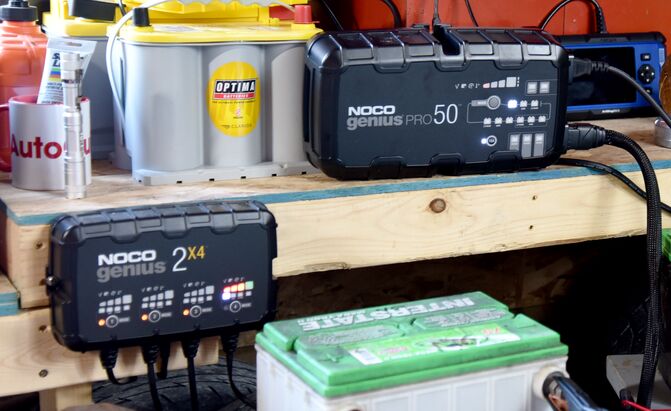






























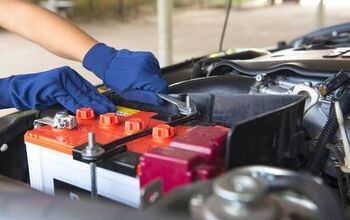


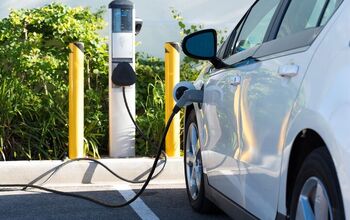
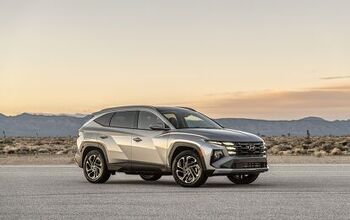
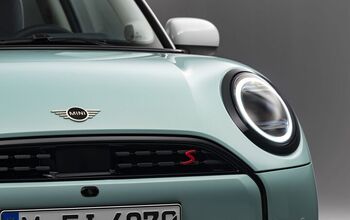
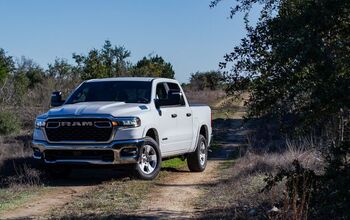


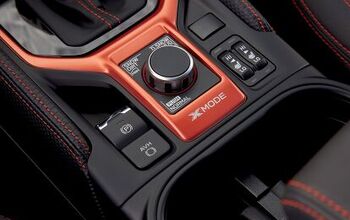





Comments
Join the conversation
love this site great content,for us in canada. Im in b.c. keep up the great work. steve